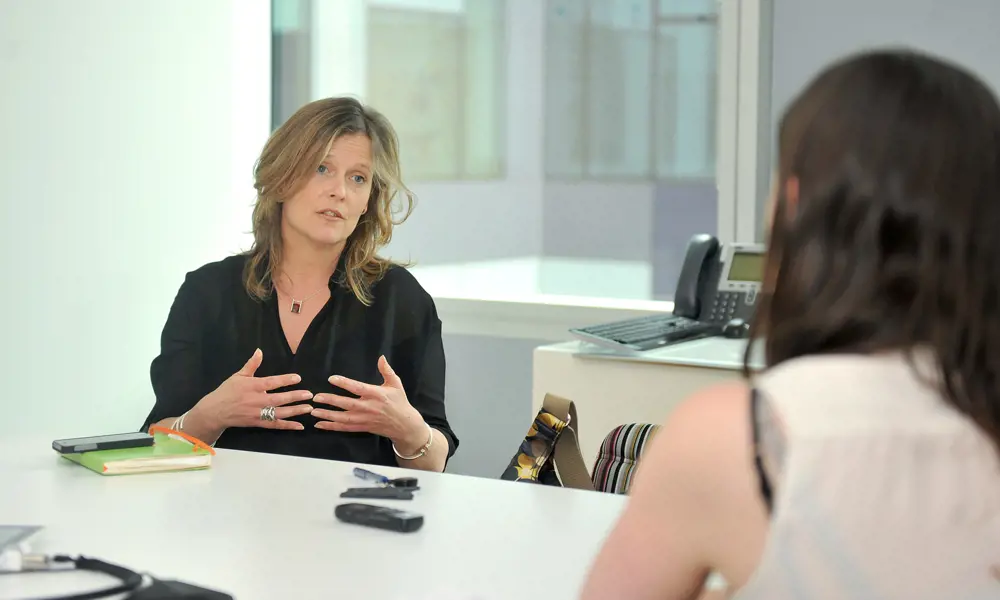
Structures for a sustainable society
A bus shelter may have seemed like a modest start for an aspiring structural engineer, but Jo da Silva OBE FREng built on those foundations and now applies her engineering skills on a much bigger canvas, as Global Leader for Sustainable Development at Arup. In reality, that bus shelter was a cut above the average, the architect was, after all, Norman Foster OM. Da Silva’s role as a structural engineer was to turn the architect’s ideas into something that could be built and would last. The bus shelter was the first step in her ambition to, as she puts it, “do something that has social purpose”. She now addresses the challenges of the world’s biggest cities and their complex infrastructure. “We very much recognise the global environment in which we work and the global challenges that are facing society,” she explains, “climate change, rapid urbanisation, and the transition to a digital future.”
Few young women choose to become engineers, even today. “We have pretty much the worst figures for female engineers of any country in Europe,” da Silva complains. Fortunately, at school she had a clear understanding of what engineers do. “I am sure that the biggest influence on me deciding to be an engineer was because my physics teacher at school had been an engineer.” He had worked on an icon of modern engineering, the design of the nose of the Concorde supersonic airliner. With her interest piqued, another school contact arranged for da Silva to visit Arup. She walked into an office full of models of buildings, “just like now,” she says, waving to an array of models in Arup’s office off London’s Tottenham Court Road. “I thought, that looks fun.”
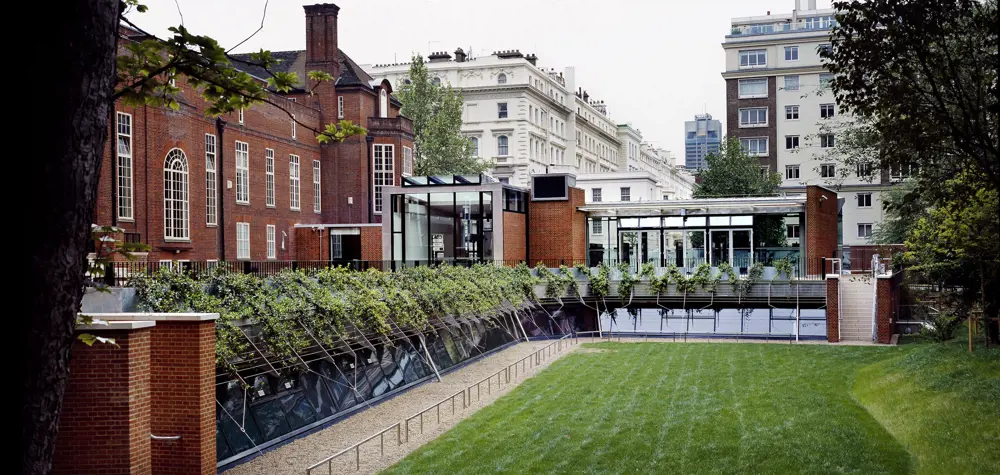
Jo da Silva worked on the refurbishment of the Royal Geographical Society in Kensington © James Morris
After studying civil engineering at the University of Cambridge, in 1989 da Silva worked in India on emergency management. A year later she returned to the UK as a graduate engineer with Arup, where she worked on larger projects such as Hong Kong International Airport and then, thanks to projects backed by the National Lottery Heritage Fund, historic sites in the UK including the National Portrait Gallery and the Royal Geographical Society in Kensington. These developments posed contrasting engineering challenges. Hong Kong was a new site, maybe not quite a green field, but certainly very different from working on listed buildings. Da Silva remembers these heritage projects with affection. The engineers had to work in the confines of historically significant, listed buildings. “I found that really exciting and really challenging. It unlocked a lot of creativity.”
These projects fed da Silva’s growing appreciation of what Ove Arup, the firm’s founder, called ‘total architecture’. “Engineering used to be only about technical parameters,” she explains. “It has increasingly become about environmental parameters and more and more it is becoming about social parameters. We are realising that how humans interact with what we create and design is part of the overall performance of the system.”
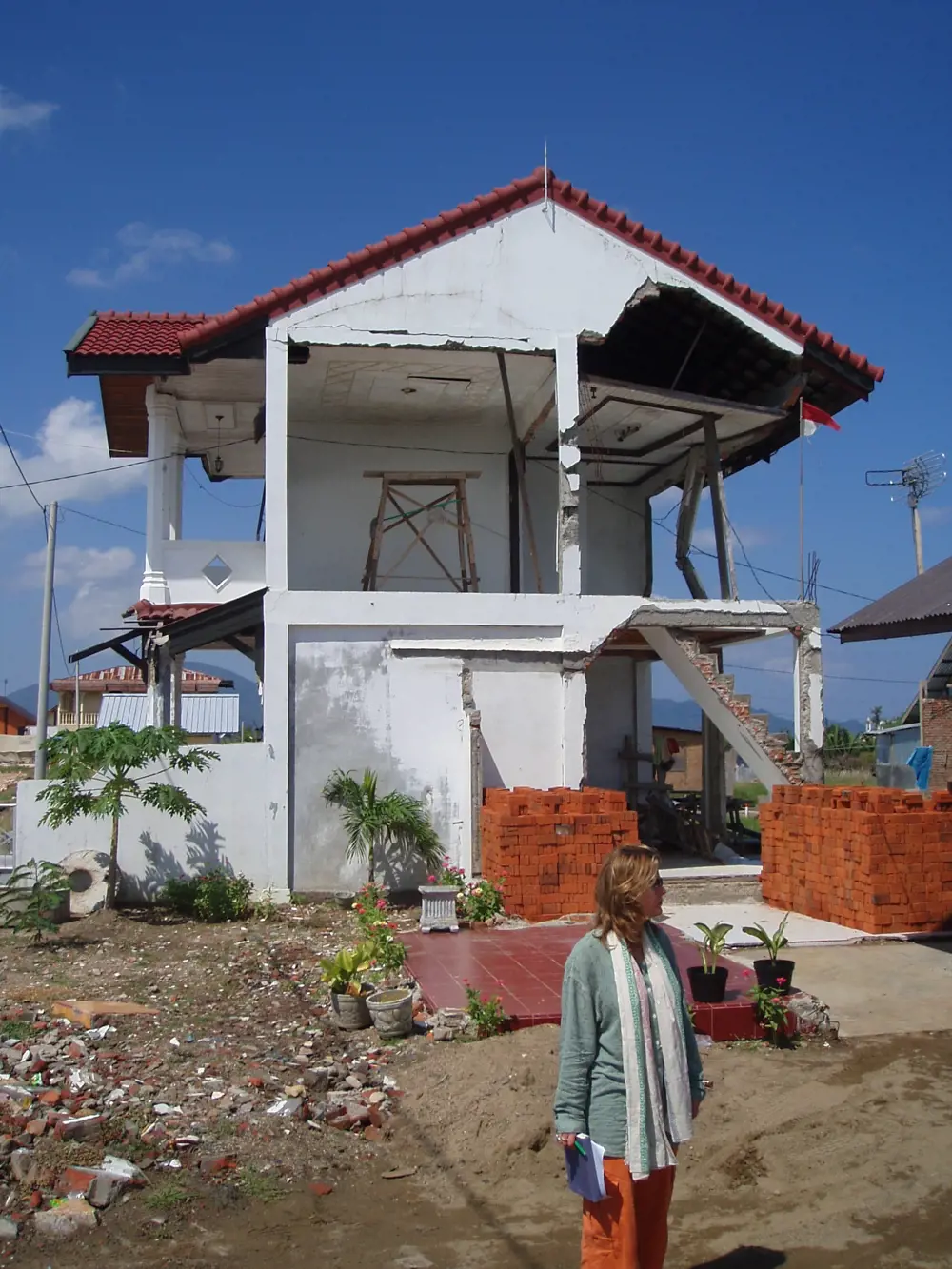
Jo da Silva in Indonesia after the 2005 tsunami, where she coordinated the shelter building efforts © Arup
Disaster Relief
Today, engineering challenges for da Silva revolve around infrastructure rather than individual construction projects. Again, she draws on her experiences in various natural disaster zones to illustrate the point. As she put it in her 2017 Gold Medal lecture (an award presented to individuals who have made a unique and outstanding contribution to the advancement of structural engineering) at the Institution of Structural Engineers, her career at Arup has been interrupted by “very abrupt leaves of absence” working for various humanitarian and UN agencies in the aftermath of disasters.
One of those ‘abrupt absences’ involved rushing to Rwanda in 1994 when Engineers for Disaster Relief, now known as RedR (Ingenia 35, ‘Rebuilding lives in times of disaster’), asked her to help with the aftermath of genocide. Almost overnight, 250,000 refugees created the second biggest city in Tanzania. Da Silva describes seeing urbanisation happening before her eyes. In 2004, the United Nations High Commissioner for Refugees (UNHCR) asked her to take her engineering skills to Sri Lanka to address the impact of the Indian Ocean tsunami. There she coordinated the work of over 100 humanitarian agencies that built over 60,000 shelters in six months.
What might have seemed like diversions from mainstream structural engineering prepared da Silva for the radical change in how we now think about the built environment. Architects, planners and engineers no longer mostly focus on buildings, today they consider infrastructure and its role in society. “Working in developing countries, and particularly in post-disaster situations, you really realise how important infrastructure systems are.”
Sustainable development
Jo argues that thinking about infrastructure in terms of what it does for society, and its impact on the environment and on climate change is essential. “Sustainable development is fundamentally about creating a balance between the needs of an ever-growing population and the health of our planet, and the limited resources that it can provide,” says da Silva. “What we are interested in, because our business is the built environment, is how that relates to the business environment, urbanisation and infrastructure.”
Da Silva uses air travel as an example of the need for new ways of thinking about infrastructure. With Arup’s own pursuit of sustainable development as a ‘guiding star’, she sometimes gets asked about the firm’s work on airports. “You can’t necessarily condemn airports as bad,” she says. “You need to think about what they do.” They play an important role creating jobs, and are part of critical supply chains for medicine and food. They also enable cultural exchange, which contributes to social cohesion. But that does not let airports off the hook: “you could put photovoltaic solar cells on the roof of terminal buildings and make them net energy generators. You can actually improve those roofs, design them differently and harvest rainwater in areas where there are water shortages.”
you could put photovoltaic solar cells on the roof of terminal buildings and make them net energy generators. You can actually improve those roofs, design them differently and harvest rainwater in areas where there are water shortages
In 2009, as a part of the campaign to change thinking in the industry, da Silva founded Arup International Development as a not-for-profit subsidiary that works with development and humanitarian organisations. The remit for this new business was “to help them make best use of resources in combating poverty and vulnerability, while increasing wellbeing and resilience”. Since then, the issues behind that activity have become more mainstream. “When I started the international development business at Arup, the things that I was worrying about, because it focused on the global South, were issues of climate change, rapid urbanisation and inequity. These are now all recognised as global challenges, as relevant in the UK as in Asia.”
It was the nature of the firm that made it possible for da Silva to set up the new business. “One of the things that attracted me to Arup in the first place was because social usefulness is a part of its DNA,” says da Silva. It isn’t all about money. The firm, which chalked up revenue of around £1.5 billion last year, is now held in a trust and is effectively owned by the 15,000 or so staff working across more than 40 countries. Da Silva is one of around 40 Arup Fellows whose thinking guides other staff members and clients.
Resilience in cities
🏙️ The complexity of resilience and the many factors that it encompasses
Over the three decades since Jo da Silva started work as a structural engineer with Arup, she has become increasingly interested in the resilience of the infrastructure that sustains society. More recently, she has placed a growing emphasis on the resilience of cities: “the population of the world has more than doubled in my lifetime. The urban population has more than quadrupled.”
The people who live in these cities depend on infrastructure that is, says da Silva, “planned, designed and constructed by engineers”. We expect the infrastructure to protect us from such natural events as storms and landslides and to provide essential services such as water and energy. “We rely on infrastructure to connect the places in which we live, to enable the flow of goods and services and for people to get around to go to work, go to school.” It does not take much to disrupt these activities.
Cities have become an important focus for work on resilience, says da Silva. She puts this down partly to the effect of Hurricane Sandy, which wreaked havoc on New York City in October 2012. It was a wake-up call and one that has helped propel growing analysis of cities, such as the work of the Rockefeller Foundation and its 100 Resilient Cities programme.
Da Silva says that “what really matters is that we understand that infrastructure faces these threats, called shocks and stresses. When we design infrastructure systems we should recognise the possibility of such events occurring and the dependency on other systems.”
Among other roles, da Silva is the acting director of The Resilience Shift, “a very exciting initiative, supported by the Lloyd’s Register Foundation”. The aim of this initiative is to raise awareness of the need for infrastructure to be resilient.
Da Silva has also worked closely with the Rockefeller Foundation to spread resilience thinking and to devise ways of measuring resilience. With support from the foundation Arup helped to develop the City Resilience Index. This established 12 goals that cities should aim for to achieve resilience.
One way of describing the challenge is, in da Silva’s words, that “resilience is really about the ability of that system to continue to operate when bad things happen”. It includes the things that we can anticipate and try to predict but “also the things that you can’t predict or because life is changing. The suite of hazards due to climate change is changing. The complexity of the cities that we live in is changing.”
Some of the thinking around resilience may seem counterintuitive. In an era when everything is increasingly digital, and with much talk about ‘smart cities’ shouldn’t digital technologies be a way of reacting to nasty things? “If we design systems that are too reliant on digital technology and feedback loops, what happens if the technology goes down?” da Silva asks. “Perhaps it makes us more vulnerable not less vulnerable.”
Resilience is a complex issue that encompasses many factors. For example, da Silva has worked on how we respond to flooding and coastal development as we seek to create resilience. “If you look at flood defences, we would have defaulted to ‘build a seawall’. Now, if you look at coastal engineering and what we are doing, there are much more integrated solutions that make the most of the environmental features, whether those are mangroves or dunes. You combine the natural blue and green infrastructure with physical grey infrastructure, and it is how those two things actually work together that matters.”
Then there is transport, which is one of the fastest growing areas at Arup. Here too the need for resilience requires new ways of thinking. As da Silva said recently, “We talk about bridges and roads when we should be talking about mobility, connectivity and ensuring the flow of goods, services and people.” For example, says da Silva, the UK’s ports are privately owned while the roads and railways that carry cargo to and from them are under public control. “The ports don’t talk to each other and they don’t have very much sway or interconnection with the planning system.” By contrast, Antwerp and other ports in Europe are mostly state-owned.
Rise of technology
A lot has changed in engineering since Ove Arup founded the business in 1946. The pace of that change has increased since da Silva joined the firm. Perhaps the most obvious change is the rise of information technology. Da Silva once had to write programs in Fortran to work out how to put one building together. There was even a DEC10 mainframe computer in the basement. However, as she says of her early days, “we all had drawing boards and we did calculations by hand with pencils and paper”. There were advantages to this – work could carry on when, as sometimes happened, there were power cuts.
These days, rows of computers sit alongside those models of buildings and developments. The computers have transformed what engineers do. “It was very exciting because the power of computers was enabling us to do things that we couldn’t have done before.” Da Silva illustrates this with a personal anecdote. “I have always loved shell structures,” she explains, “Luigi Nervi was one of my heroes with his concrete shell structures.” It was only when computer technology arrived that she could indulge her passion and create single-skin steel lattice structures. These are non-linear structures in how they behave and that meant using some complex computing.
“This shift to digital technology and the use of data, automation, and artificial intelligence is taking us into a whole new era of engineering,” says da Silva. Thanks to machine learning, engineers don’t have to spend hours on mundane tasks like analysing borehole data. “You don’t really want to do things twice. If you can do things once and then automate it, hurrah!” You can do in hours tasks that once took days. As a consequence, she says, “the scale of projects that we can do now is way bigger”.
The real benefit of this digital transformation, says da Silva, is that it frees up engineers’ time for more creative pursuits. Thinking time has become more important as engineers take on increasingly complex challenges that require a broader mix of expertise. Another big change in da Silva’s career has been the need to bring in more disciplines to handle that complexity. “Life isn’t just about technical parameters. You need to understand the environmental parameters, the social parameters, the economics behind what we are doing.”
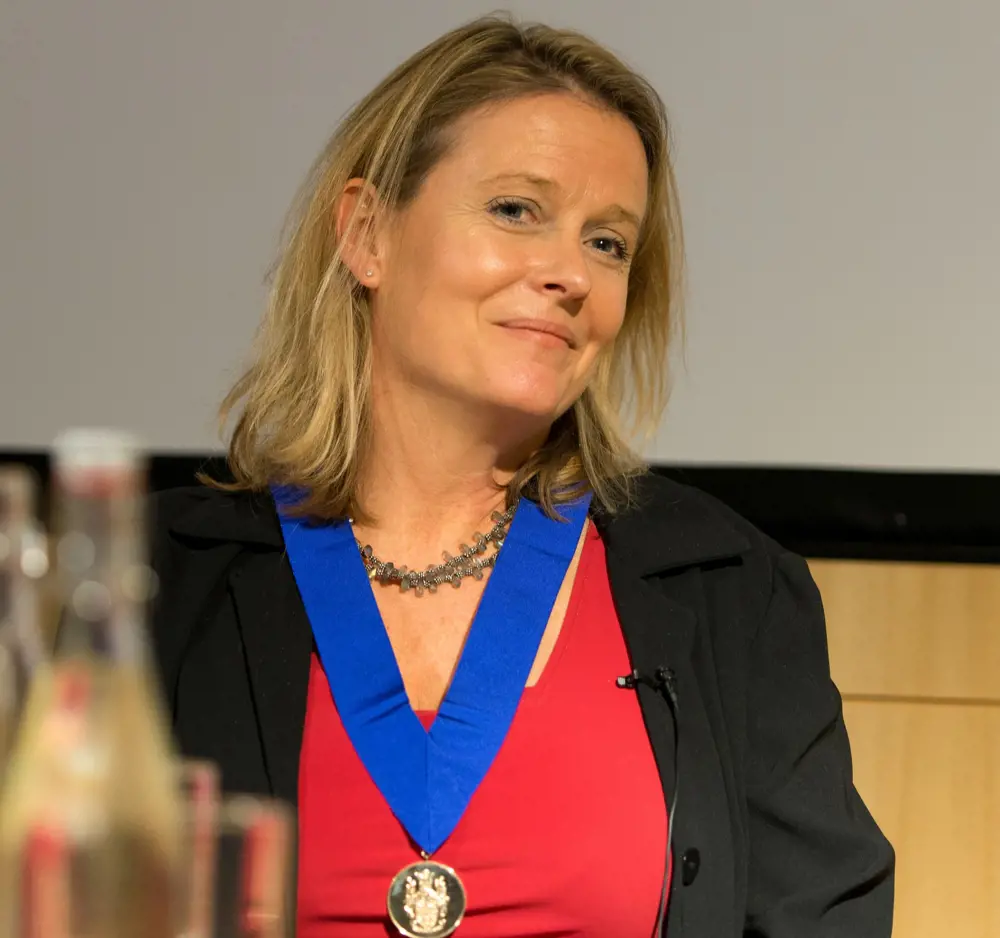
In 2017, Jo da Silva was awarded a Gold Medal from the Institution of Structural Engineers for outstanding contribution to structural engineering © Arup
Evolution of engineering
More generally, da Silva believes that the profession itself has changed. “The discipline of engineering has evolved substantially over the past 30 years. It is not just about technical knowledge and know-how. It is not just our analytical capability, it is also creativity and problem-solving capability.” These attributes are essential components of any attempts to solve society’s current challenges. “We live in an increasingly complex society that is permanently under stress and facing dynamic hazards such as climate change.”
For da Silva, the three key strands in her engineering are sustainability, resilience and inclusivity. “Sustainability, for me, is about the environmental agenda.” She takes a swipe at conventional thinking. “An engineer will believe in the second law of thermodynamics. An economist will believe in economic growth.” But economic growth exists within a world that is designed by the laws of physics, she adds.
When it comes to resilience, da Silva is a campaigner. As she sees it, “resilience is about contemplating failure and thinking about what happens when shocks and stresses occur”. Engineers need to forget about failsafe and to plan for safe failure.
Da Silva’s view is that we have to accept that failure will happen, but we need to think about it more carefully. “We are required by law to design for a one-in-100-year flood, but we are not required to ask what happens if that one-in-100-year flood is exceeded, and whether failure at that point is sudden and catastrophic or whether it is a much more gentle, progressive, ductile failure.”
Da Silva uses seismic engineering to demonstrate a different approach. “We don’t know when an earthquake is going to happen, and we don’t want buildings just to fall down. We can tolerate them being damaged as long as everyone can get out safely. You might want to design them for higher performance specifications so that actually they can be back in operation very quickly, like a hospital. But that is not how we typically think when we are designing our roads, our electricity distribution systems or water systems.”
Inclusivity, the third of da Silva’s essential attributes, might once have seemed quirky but, with talk of a growing ‘wealth inequality’, the issue has become part of the political mainstream. As da Silva puts it, “Lots of people. One planet. How to rebalance that equation.” As she saw in Tanzania and as we saw in London’s Tottenham riots in 2011, it doesn’t take much to disrupt societies, and when society breaks down it affects everybody. Engineers have a crucial role to play in designing environments that reduce the chances of that happening.
resilience is about contemplating failure and thinking about what happens when shocks and stresses occur
Career timeline and distinctions
Born, 1967. Graduated with an MA in civil engineering from the University of Cambridge, 1988. Graduate engineer at Arup, 1989. Co-founded RedR International, 1995. Visiting Senior Research Fellow, University of Cambridge, 2001. Senior Shelter Coordinator UNHCR after Sri Lanka tsunami, 2005. Founded Arup International Development, 2009. Fellow of the Royal Academy of Engineering, 2009. Appointed an OBE, 2011. Awarded the Gold Medal of the Institution of Structural Engineers, 2017.
“We, as engineers, create the stage set in which the play happens,” says da Silva. Again, she draws on her earlier experiences to illustrate this. “When you are working in developing countries, a lot of what you do involves participatory processes to engage with people and understand what they want and what their views are. Those processes are becoming more prevalent here.”
Sustainable development, now explicitly embracing inclusivity and resilience, has been the underlying theme of da Silva’s career. So much has changed since she worked on bus shelters that da Silva sometimes wonders how she should describe herself. “Do I refer to myself as a structural engineer? That would conjure up in people’s minds someone who sits and designs buildings on a day-to-day basis.” She has contributed to designing buildings over the past 10 years, but admits that she hasn’t designed a building herself in that time. However, she insists, her approach hasn’t changed: “I’m still using the way engineers think in terms of the ability to define problems, to ask the right questions, and to assemble information and think creatively in all the work that I do.”
***
This article has been adapted from "Jo da Silva- Structures for a sustainable society", which originally appeared in the print edition of Ingenia 80 (September 2019).
Contributors
Michael Kenward OBE
Author
Keep up-to-date with Ingenia for free
SubscribeRelated content
Civil & structural

Building the Shard
The Shard is one of London's most iconic buildings. The tallest in Western Europe, it was designed by Italian architect Renzo Piano and dominates the city’s skyline. Ingenia spoke to John Parker, project director for structural engineers WSP, who outlined the engineering decisions made in building the enormous steel and glass structure.
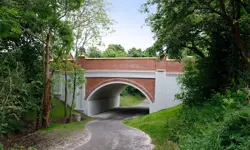
FlexiArch
Arch bridges are strong, durable and require little maintenance. However, very few had been built since the early 1900s until the FlexiArch was developed and launched in 2007. Now, there has been a minor renaissance for this ancient form of construction.
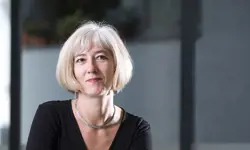
Creating user-friendly buildings
For Michelle McDowell, a former Business Woman of the Year, a passion for joined-up design thinking and building information modelling with a user-friendly approach has enabled her to pioneer revolutionary changes in her field.
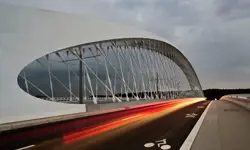
Troja Bridge
In November 2014, one of the world’s largest network arch bridges was officially opened in Prague. The UK may soon have its first network arch bridge if the go-ahead is given for a new rail project in Manchester.
Other content from Ingenia
Quick read

- Environment & sustainability
- Opinion
A young engineer’s perspective on the good, the bad and the ugly of COP27

- Environment & sustainability
- Issue 95
How do we pay for net zero technologies?
Quick read

- Transport
- Mechanical
- How I got here
Electrifying trains and STEMAZING outreach

- Civil & structural
- Environment & sustainability
- Issue 95